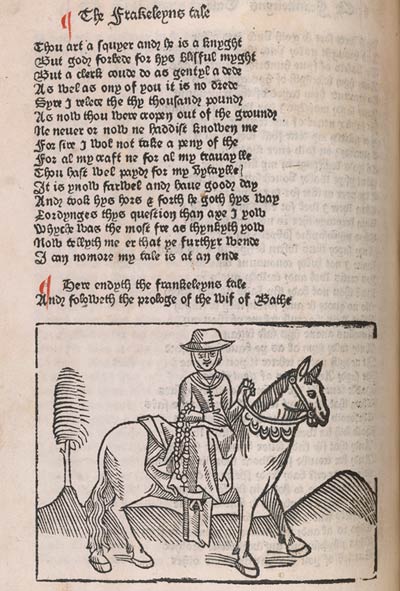
About 1474 something never seen in print before rolled off the press: the English language. William Caxton, an English merchant and diplomat, had recently learned of the new technology of print invented by Johann Gutenberg twenty years before, and Caxton capitalized on the commercial opportunity offered by this revolutionary invention. William Caxton and the Birth of English Printing celebrates this foundational moment in the history of English literature and language. Caxton published key works of English literature, such as Chaucer and Malory, as well as short religious and didactic texts, many of which he translated from French or Latin. Through his publishing activity, Caxton also helped to stabilize the English language by promoting a single dialect, and through print this dialect became more prevalent and helped to form the basis of our modern language.
As artifacts of nationalistic importance, Caxton imprints have been choice prizes for collectors since the 18th century. Pierpont Morgan favored Caxton over Gutenberg as a founder of printing and strove to acquire a premiere collection of his work. The Morgan has the third largest collection of Caxtons in the world, preserved for their literary, linguistic, and historical significance.
This exhibition is generously made possible by the Acriel Foundation, the Sherman Fairchild Fund for Exhibitions, and the Zachs-Adam Family Fund.
Geoffrey Chaucer (d. 1400), The Canterbury Tales (Westminster: William Caxton, about 1483). PML 693, f. q6v. The Morgan Library & Museum, Purchased with the Bennett Collection, 1902.
